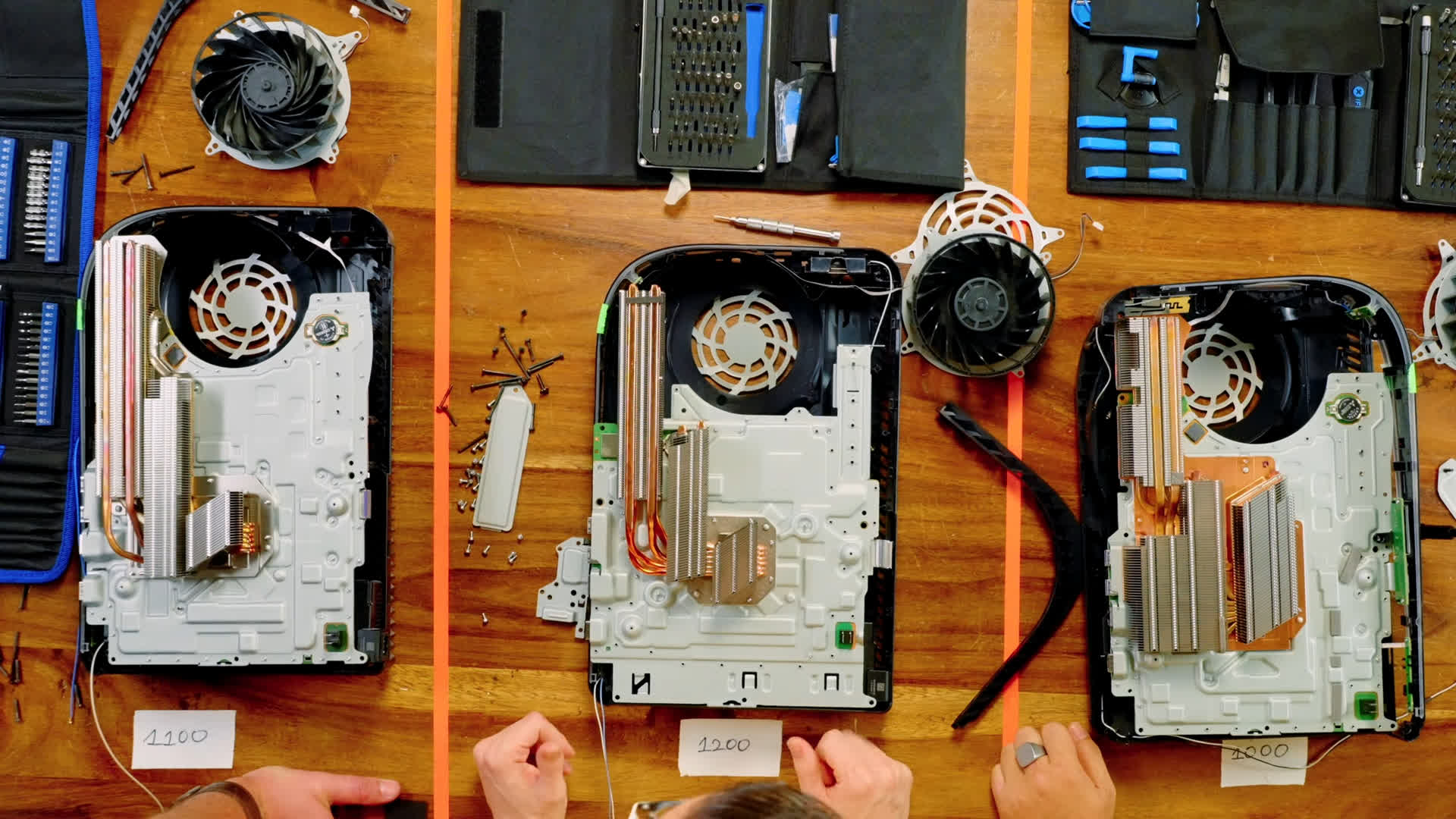In a nutshell: Although it looks identical on the outside and it's sold as the same PlayStation 5 console, Sony is shipping a new revision of the device with changes and improvements in terms of weight and energy consumption. More surprising, however, is the redesign for the console innards including the motherboard and cooling system.

A new high-end controller and increased retail price are not the only recent changes Sony is making to the PlayStation 5. A few days ago, a new hardware model of the 9th-gen gaming machine hit retailers in Australia, the second revision to arrive on the market after the console's initial release on November 2020. YouTuber Austin Evans has already put this new revision to the test to see what is different and improved under the hood.
Evans, who already looked into the previous PS5 changes, purchased a revised PlayStation 5 and compared all three models released thus far. It was already known from the spec sheet that the new "CFI-1200" revision was going to be lighter in both the optical drive equipped model (300g) and the digital one (200g), but Evans's analysis has confirmed that there are several more differences than just weight...
On the outside, PS5 model 1200 is identical to previous 1000 (2020) and 1100 (2021) versions; the 2022 model weighs almost half a kilogram less that the 2020 model, while thermal performance in gaming is much better than the 1100 model (53° versus 63°, measured on the back of the console) and closer to the original model.
The most striking difference will be found inside as the new PS5 revision is using a redesigned motherboard, cooling system, and heatsink. The massive cooler in the 1000 revision had been shrunken down in 2021, and the latest 2022 revision goes further with an even smaller -- and clearly lighter -- design.
The new heatsink completely covers the CMOS battery as well, requiring complete disassembly of the console to eventually replace the battery. The fans look the same, but the blades aren't attached to the central hub anymore.
The PS5 model 1200 uses 10% less power, too. In Evans' tests with Astro's Playroom (the platformer that comes preinstalled with every PS5 console), the PlayStation 5 models drew approximately 218W (1000), 229W (1100) and 201W (1200). A more than welcome improvement considering the sudden rise in energy prices in many regions.
https://www.techspot.com/news/95899-new-playstation-5-hardware-revision-loses-weight-cuts.html